Powercolor Radeon R9 380 4gb Pcs+ Video Card Review
Y'all guys might be thinking why I published this review since the enticing new AMD Radeon RX 480 and NVIDIA GeForce GTX 1060 are already available in stores at present. The reason behind this review is not only to benchmark the card just to voice out my stance on why certain people can just stick with an older generation to salve a little moolah.
Most gamers actually spend well-nigh of their time playing eSports titles game similar CS:Get and DOTA2. Based on the June 2016 Steam surveys, 1080p resolution monitors are yet the near common. Those titles don't demand much GPU horsepower to run at 1080p, so getting the latest cards will be quite irrelevant, actually.
When the AMD RX 480 and NVIDIA GeForce GTX 1060 surfaced, I saw a lot of people wanting to sell off their R9 380 and GTX 960 to upgrade to the newer cards. Thus I saw an opportunity for certain people who are on tighter budgets who might desire to snap up one of these "last-gen" cards.
Only for the sake of this review, I got a unmarried PowerColor PCS+ Radeon R9 380 to examination whether it would actually be a good idea to become 1 of these older cards. This 1 is for you guys with tight budgets out there.
Unboxing
Red and black color scheme is the norm on nigh "gaming" components and peripherals, and the PowerColor PCS+ Radeon R9 380'due south packaging does nothing to buck the tendency. There'due south nothing much to see on the top of the box, while on the bottom nosotros take more juicy details about the technologies PowerColor crammed on this bill of fare, such as the custom cooling solution and ability commitment organization.
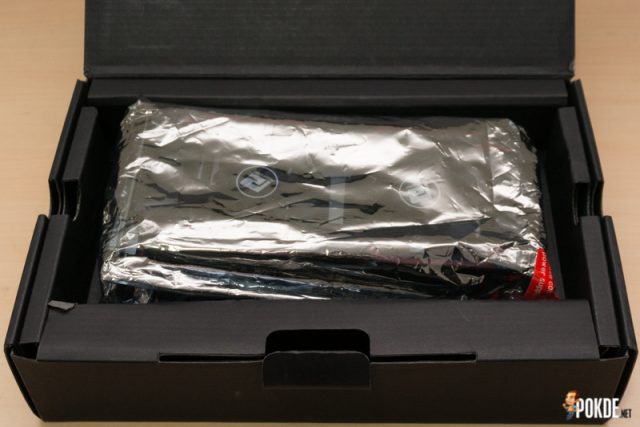
Inside the packaging we accept the PowerColor PCS+ Radeon R9 380 itself, sitting alone without any DVI to VGA adapter or any driver installation CD. I don't heed not having the driver installation CD, because that they will most probably not be the latest version by the time it reaches the consumers' hands anyhow.
Appearance
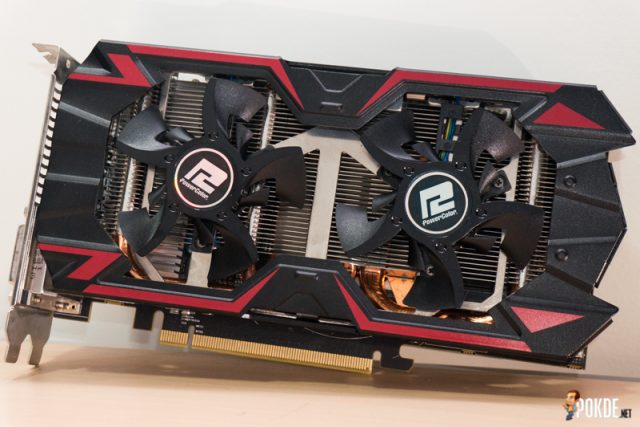
Start off, the fans. These are easily the about interesting part on this card, and some of the most unique I have ever seen. PowerColor claims that its unique 80mm fan tin can provide 20% more airflow than a normal fan, thus dissipating rut with improved efficiency. With just five blades on the fan, we can clearly see the shiny nickel-plated aluminium fins.
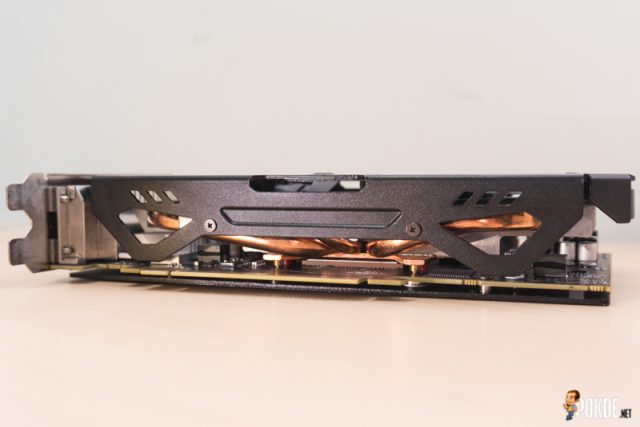
To wick the oestrus from the GPU to the cooling fin assortment, PowerColor has equipped this carte with two 8mm copper heatpipes and a smaller 6mm heatpipe, The heatpipes are connected to a pure copper base to ensure heat is transferred from the GPU to the heatpipes effectively.
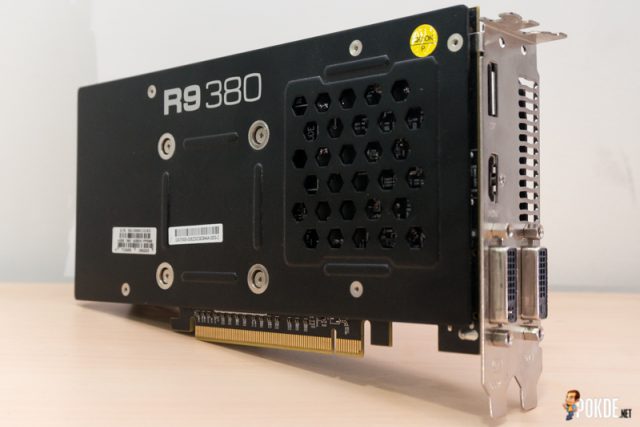
The dorsum of the menu the is covered up with a backplate. It's doesn't help in improving the cooling operation but information technology does ameliorate the aesthetics of the card. It isn't purely for looks though as it also helps to increase the rigidity of the card, making information technology less prone to bending. Merely for me, the backplate on the PowerColor PCS+ Radeon R9 380 is not necessary to prevent the card from bending because the cooler isn't heavy enough to cause it to bend.
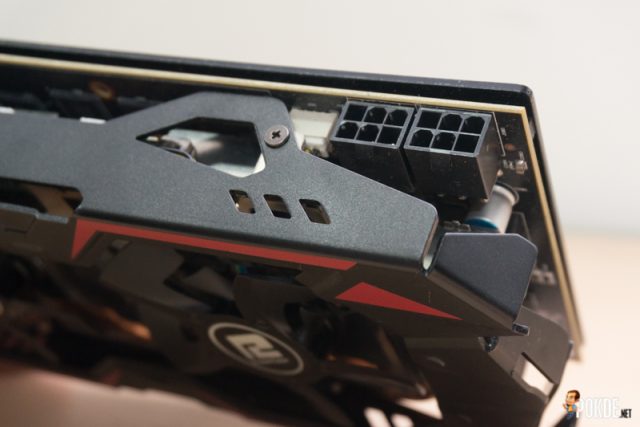
For power, the PowerColor PCS+ Radeon R9 380 is fed via two 6-pin PCI-e power connectors. This card will be able to pull up to 225W from the power connectors and PCIe slot, but it will about probably never ever describe that much power.
Examination Machine
Hardware
For this review, the rig specifications are listed below. I'm using the Xeon E3 1230V3 for several reasons. Firstly, I don't overclock and during the time I transitioned from AMD to Intel, I needed a processor with a adept price-to-functioning ratio. The Xeon E3 1230V3 is practically a i7-4770 sans the iGPU. Who cares about any iGPU when nosotros are building gaming rigs, right? Since the cost is much cheaper than the i7-4770, the decision was very like shooting fish in a barrel to make. For a guide on how I optimized my Xeon, click here.
| Processor | Intel Xeon E3 1230V3 @ 0.86v |
| Motherboard | ASUS H87-PLUS |
| Retentiveness | Corsair Vengence DDR3 16GB (4x4GB) |
| Storage | Corsair LS 120GB (Organisation), Western Digital Blue 1TB (game) |
| Ability Supply | Acbel iPower 90m 600W 80+ Gilded |
Software
Well-nigh all the software used in this examination are updated to the latest version. That includes the operating organisation, system drivers, BIOS and graphic commuter.
| OS | Windows 10 64bit |
| GPU driver | AMD Radeon Software Ruby-red xvi.iii.ii |
| Antivirus | Windows Defender |
| Utilities | FurMark, Fraps, ASUS GPU Tweak, GPUZ, OBS, Steam, Uniplay, Origin, GOG Galaxy |
| Games tested | Witcher 3, Battlefield 4, Grid 2, DOTA2 Reborn, CS:GO |
Operation
So, I mentioned about "past-gen" cards from both AMD and NVIDIA. To make it fair, I will besides throw in the results I obtained from the ASUS STRIX GTX 960 that I have previously reviewed. Come across for yourself if these older cards are good plenty.
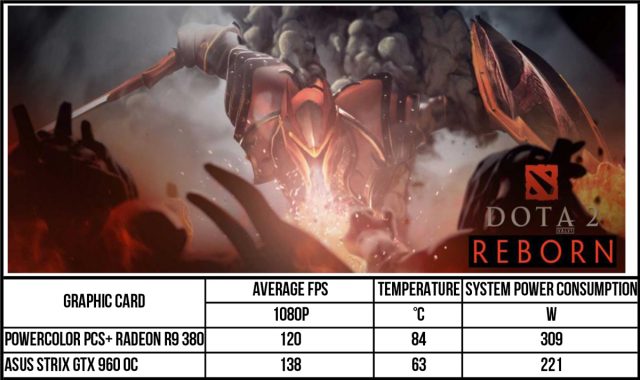
DOTA ii is far from a graphically taxing game, just it is indeed 1 of the most pop games amongst PC gamers. Here yous see the PowerColor PCS+ Radeon R9 380 getting an average of 120 fps, while the ASUS STRIX GTX 960 pushed a slightly higher framerate of 138 fps, but back then DOTA2 oasis't received the Ultra Shadow update yet which does reduce framerates quite noticeably. The thermals and power depict of the R9 380 is also higher than the 960, but then we are comparing between very different architectures as well every bit two cards of different power requirements, so this is quite a moot bespeak. Operation wise, both cards should requite a very enjoyable experience playing DOTA 2.
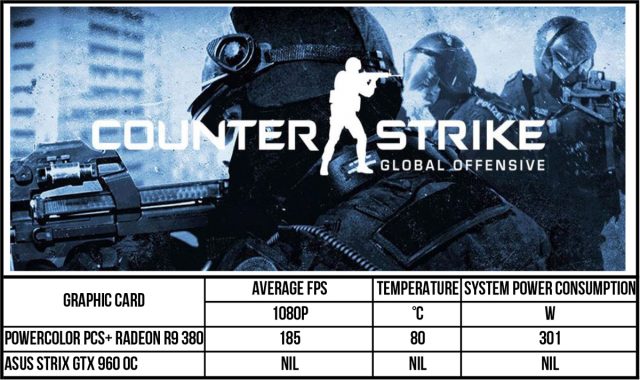
CS:GO is however another pop game on Steam. I didn't test the GTX 960 with CS:Get, but results should not be that far from the R9 380'due south frame rate. With the R9 380 pushing well higher up 120 fps here, information technology is more than than enough for a adept game, as long every bit yous are expert at aiming yourself.
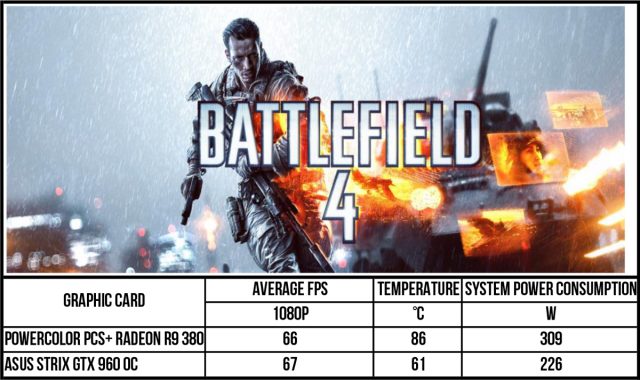
I also tested BF4, and the results were quite impressive. The R9 380 was capable of getting more than than 60 fps on Ultra setting, and you may achieve even better framerate past disabling the anti-aliasing. Performance is similar between the cards from the reddish team and green camp, and once again we saw the trend of college temperatures and power describe here.
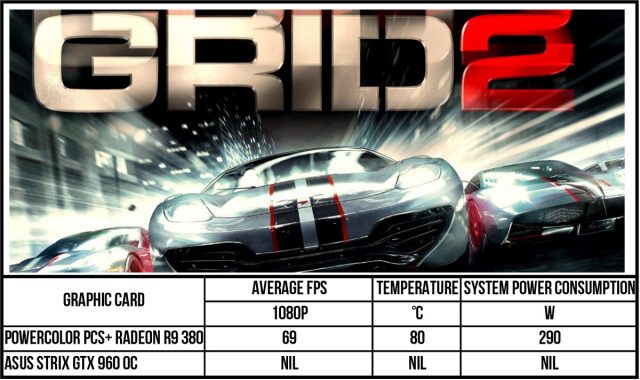
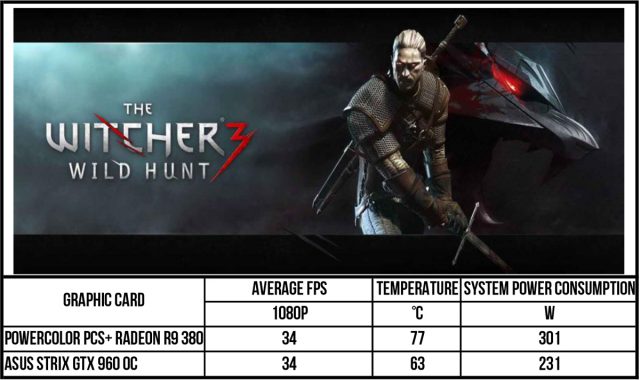
For extra criterion I ran GRID 2 and Witcher iii. The PowerColor PCS+ Radeon R9 380 hands got a dainty boilerplate of higher up threescore fps in GRID 2, only Witcher 3 was some other brawl game altogether. Only managing above 30 fps, these cards are a piddling underpowered if you want to play The Witcher three with total graphics.
Conclusion
Right at present we're absolutely certain that the PowerColor PCS+ Radeon R9 380 is more enough for eSports titles for at least another 1 or 2 years. You can safely get one of those secondhand R9 380s or GTX 960s and be happy with them if you have a small upkeep. Of course, it doesn't mean the new cards aren't worth the money. The new cards are great, but live within your means, yes?

For the PowerColor PCS+ Radeon R9 380, information technology's a good card if you're planning to stick with eSport titles at 1080p. If y'all're planning on upgrading to a higher resolution, yous might consider getting one of the GTX 1060s or RX 480s. Also if you're going to swoop in VR experience, the latest RX 480 and GTX 1060 clearly on its edges. Even with its age, the performance of the PowerColor PCS+ Radeon R9 380 is even so worthy of a Bronze Pokdeward.
Related
grazianofoxys1977.blogspot.com
Source: https://pokde.net/review/powercolor-pcs-radeon-r9-380-review
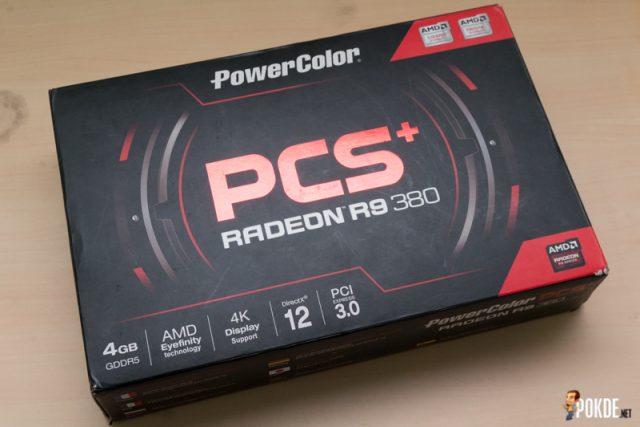

0 Response to "Powercolor Radeon R9 380 4gb Pcs+ Video Card Review"
Post a Comment